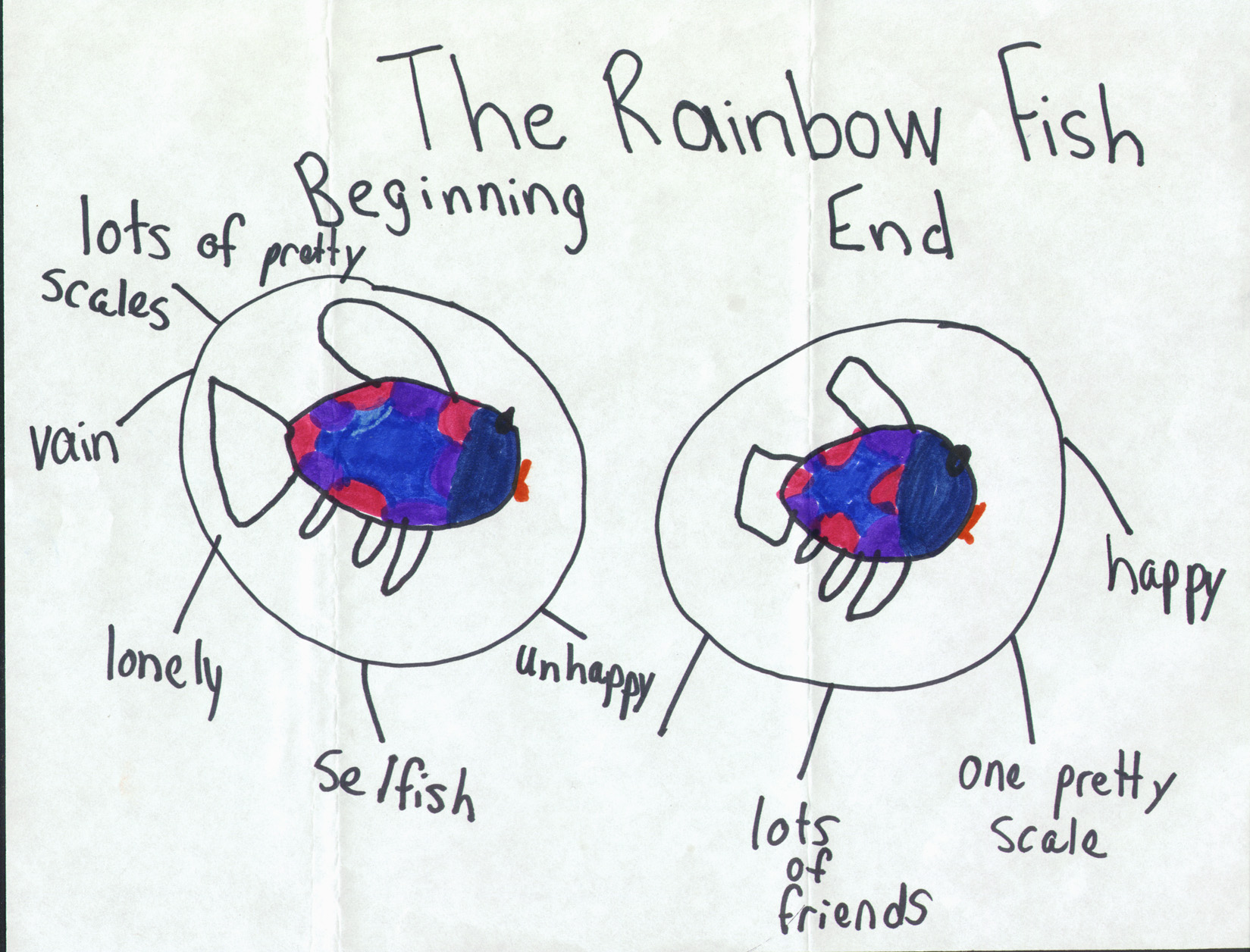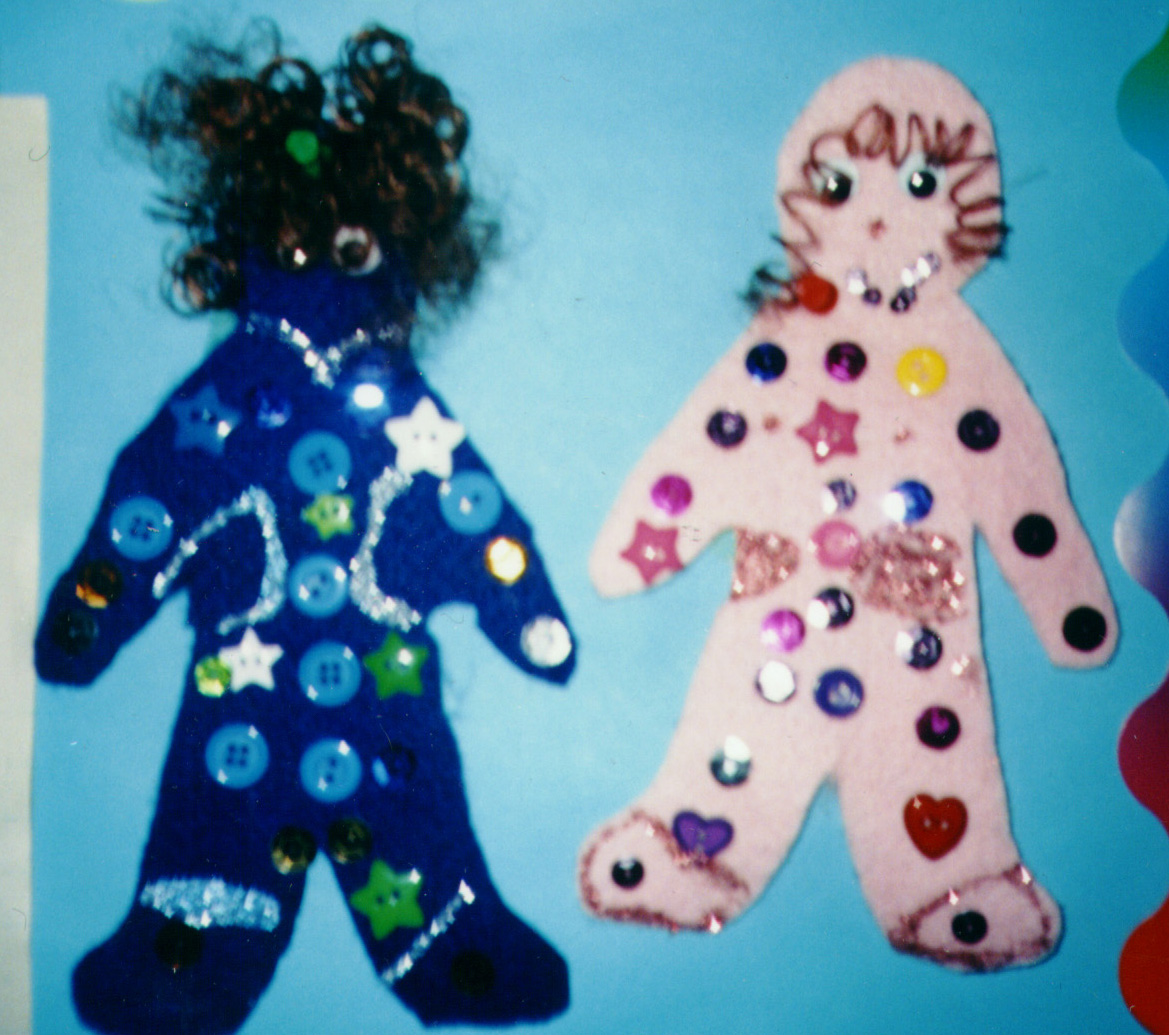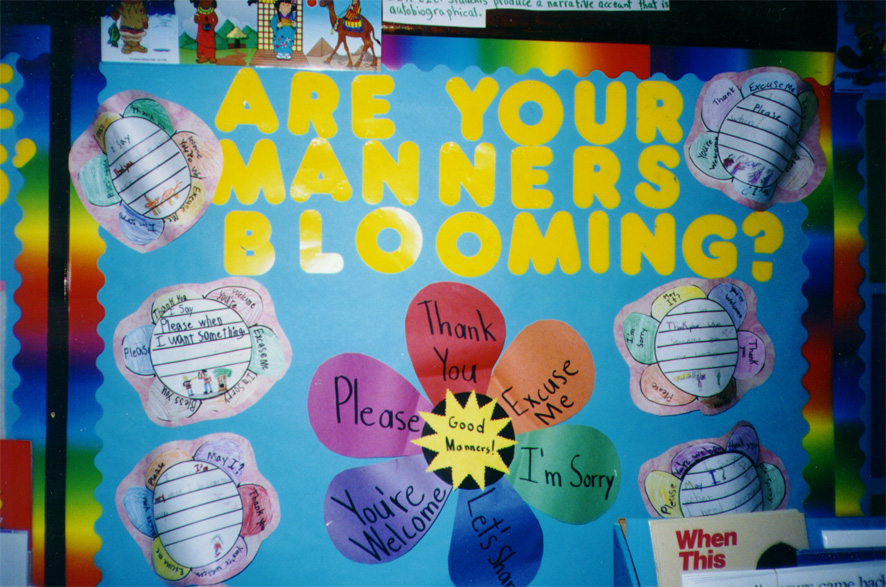Grade level-First grade
Goals- To instill within children what it means to be a good friend.
To instill within children the qualities of a good friend.
Timeline- approximately 4-5 class periods
Vocabulary- friendship, imaginary, friend, respect, caring, manners, kind, polite
Standards-English Language Arts:
Students comprehend at least four books on the same subject.
Students produce a response to literature.
Students produce a narrative account that is autobiographical and narrative.
Students produce work in at least one literary genre that follows conventions of
genre; poetry.
![]()
1. What are the qualities of a good friend?
a. To discover children's prior knowledge of friendship.
b. To use prior knowledge to write a response to literature.
Brainstorm words that answer above question with children.
Write responses on semantic web.
Read the book Corduroy, by Don Freeman.
Upon finishing ask them how Corduroy and Lisa showed the qualities of being a friend listed on chart.
Write their responses in a chart.
Using KidPix have children make a chart split in half with a computer drawn image of Lisa and Corduroy, and label how
they were a good friend to each other.
See example
![]()
2. What makes a "F-R-I-E-N-D?"
a. To learn about acrostic poetry.
Write the word "friend" in a chart with each letter having its own
column.
Brainstorm words, having to do with friendship that start with each
letter.
Write words discussed in chart.
| F | R | I | E | N | D |
| funny | rich | ice cream | excellent | nice | drive |
| face | real | ices | end | nobody | dance |
| fun | run | ice skating | eternal | nothing | dog |
| finest | right | I | exit | nowhere | doll |
Write an example poem using their ideas, such as,
F is for fun.
R is for race.
I is for ice cream.
E is for excellent.
N is for nice.
D is for driving.
Using the above pattern and completed chart have them complete the pattern with their own words or words from the chart.
Illustrate poem by either drawing a picture of each word, or of them and a friend doing one of the things listed in their poem.
![]()
3. Whose manners are blooming?
a. To discuss what good manners are and how we should use them.
Ask, "What are good manners?"
Write responses on chart.
Proper word to say: When to use it:
| please | when I want something |
| thank you | when someone gives me something |
| excuse me | when I want someone's attention |
| may I | when I need permission |
| you're welcome | when someone thanks me |
Read, What Do You Say, Dear? by Maurice Sendak.
Ask them if they want to add anything to the chart.
Finish chart by asking them when, in real life, they would use the above terms.
After that, give students the flower worksheet.
Have them write each of the proper words on each petal.
In the middle using the chart have them fill in the following sentence:
I say __________________when___________________.
For example:
I say thank you when someone gives me something.
Have them draw a picture on bottom of them doing what they said.
![]()
4. Can we compare qualities of characters in children's literature at the
beginning and at the end ?
Using some of the following books (there are many others on this topic), web character traits at
the beginning of the story and then at the end to see how the character has changed.
(See complete bibliography)
Pfister, Marcus. The Rainbow Fish.
Zolotow, Charlotte. The Hating Book.
Joslyn, Sesyle. What Do you Say, Dear?
Carle, Eric. The Grouchy Ladybug.
Henkes, Kevin. Jessica.
Freeman, Don. Corduroy.
For example, after reading The Rainbow Fish make a semantic web describing
characteristics of the rainbow fish at the beginning and then do another one for
the end. The completed ones should look similar to the following:

Beginning of story End of story
| unhappy | happy |
| lots of scales | one colorful scale |
| unfriendly | lots of friends |
| lonely | |
| selfish |
When finished with first book, see if it can be done with another book, like
The Grouchy Ladybug.
![]()
5. Who is your
imaginary friend?
a. Children will produce a story that is narrative.
Read Jessica by Kevin Henkes.
Discuss how Ruthie felt at beginning of story and how she felt at the end.
Give student worksheet to complete.
When corrected have them rewrite and draw a picture of themselves and their imaginary friend.
After that have them make imaginary friends using felt people and different
art mediums:

![]()
Pfister, Marcus. The Rainbow Fish. New York: North-South Books, Inc.,1992
Zolotow, Charlotte. The Hating Book. New York: HarperCollins Publishers,
1969.
Joslyn, Sesyle. What Do you Say, Dear? U.S.A.: Addison-Wesley Publishing
Company, 1958.
Carle, Eric. The Grouchy Ladybug. New York: Scholastic Inc., 1977
Henkes, Kevin. Jessica. New York: Scholastic Inc., 1989
Freeman, Don. Corduroy. New York: Puffin Books, 1968
http://teachervision.com/lesson-plans/lesson-15045.html
This is a web lesson on friendship, with a printable activity worksheet.
http://kotn.ntu.ac.uk/friends.cfm
This site has stories about friends written by children.
http://stf.sk.ca/teaching_res/library/teach_mat_centre/teach_mat_centre.htm
This site has lesson plans for teachers on friendship.
![]()
Classroom Bulletin Boards:
